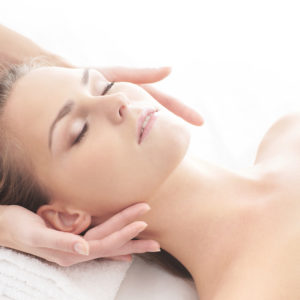 Botox is most widely known for smoothing wrinkles, but the medication has repeatedly surprised the medical community for its seemingly unlimited applications.
Botox is most widely known for smoothing wrinkles, but the medication has repeatedly surprised the medical community for its seemingly unlimited applications.
After a drug receives approval in the United States for a particular medical condition, doctors can legally prescribe it for any medical issue that they believe it could benefit, irrespective of whether it has been proven to be effective for that condition.
Board certified plastic surgeon Dr. Jacob Bloom provides Botox injectable treatments to patients in Chicago, IL, and surrounding locations.
Chronic Migraines (FDA approved)
In 1992, some cosmetic surgeons observed that when people received Botox for wrinkles, they reported having fewer headaches. Subsequently, Allergan tested the medication on people suffering from chronic migraines, and Botox was approved for the condition in 2010.
Today, individuals undergoing Botox for migraine prevention receive 31 injections in various spots on their neck and head. The effects sustain for nearly three months.
Excessive Underarm Sweating (FDA Approved)
As doctors noticed that patients undergoing treatment for facial spasms were sweating less, the scientists at Allergan and outside the company started analyzing whether Botox could be an effective treatment for people with a condition known as severe primary axillary hyperhidrosis.
In 2004, Botox was approved for the treatment. Certain people also use Botox to treat excessively sweaty hands and feet.
Overactive Bladder (FDA Approved)
In one study, researchers found that around 70 percent of women treated with Botox reported almost three leaks a day in comparison to the average of five leaks a day at the commencement of the study. But there is a catch. At times, Botox can shut the bladder too much, and the patient may need to use a catheter.
Crossed-Eyes (FDA Approved)
Strabismus is a condition that impacts around four percent of Americans. In this condition, the eyes do not line up in the same direction. The treatment of this disorder was one of the first Botox approvals.
Depression (Not FDA Approved)
While many experts are still skeptical, early trials indicate that Botox may relieve symptoms in people with depression. The proposed mechanism is based on a concept called facial feedback hypothesis, which holds that an individual’s facial expressions can have an impact on their mood.
Premature Ejaculation (Not FDA Approved)
Botox may relax the muscle and delay ejaculation when injected into the penis. At present, Allergan is testing Botox for this issue. Additionally, the company holds a patent for erectile dysfunction treatment, which presently being tested in a third-party clinical trial.
Abnormal Heartbeat (Not FDA Approved)
Allergan is assessing Botox as a treatment to prevent irregular heartbeat patterns following open-heart surgery (known as post-operative atrial fibrillation).
Painful Sex (Not FDA Approved)
Certain women experience contractions of the vagina or muscle spasms on their pelvic floor that can make sex a painful activity. Botox injections can relieve the pain by enabling these muscles to stop contracting.
Doctors at the Cleveland Clinic who provide women with Botox injections for painful sex report that some women may require injections every six months, while others may only need them only once in two years.
Severe Neck Spasms (FDA Approved)
Before Botox received FDA-approval for frown lines between the brows in 2oo2, Allergan received approval for the medication in 2000 for its use in the treatment of a disorder known as cervical dystonia. This condition is characterized by severe neck pain and abnormal head position.
Cosmetic surgeon Dr. Jacob Bloom receives patients from Chicago, IL, and nearby areas for Botox injections.
